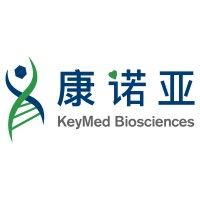预约演示
更新于:2025-05-07
TSLP x IL-13
更新于:2025-05-07
关联
7
项与 TSLP x IL-13 相关的药物作用机制 IL-13 modulators [+1] |
非在研适应症- |
最高研发阶段临床2期 |
首次获批国家/地区- |
首次获批日期1800-01-20 |
作用机制 IL-13抑制剂 [+2] |
在研机构 |
原研机构 |
非在研适应症- |
最高研发阶段临床2期 |
首次获批国家/地区- |
首次获批日期1800-01-20 |
24
项与 TSLP x IL-13 相关的临床试验CTRI/2025/03/081865
An open label extension study to evaluate the long-term safety and efficacy of subcutaneous lunsekimig in adult participants with moderate-to-severe asthma who participated in study DRI16762 - Airphrodite
开始日期2025-06-15 |
NCT06930612
A Randomized, Double-blind, Placebo-controlled Phase II Clinical Study to Evaluate the Efficacy and Safety of CM512 in Patients With Chronic Rhinosinusitis With Nasal Polyposis
This is a multi-center, randomized, double blind, placebo-controlled Phase II study to evaluate the efficacy and safety of CM512, and to observe the life quality of subjects, the Pharmacokinetics, Pharmacodynamics and immunogenicity of CM512 in patients with chronic rhinosinusitis with nasal polyposis (CRSwNP).
开始日期2025-05-16 |
申办/合作机构 |
NCT06947980
A Randomized, Double-Blind, Placebo-Controlled, Multicenter Phase 2 Study to Evaluate the Efficacy and Safety of CM512 in Patients With Moderate-to-Severe Atopic Dermatitis
A Phase 2 study designed to evaluate the efficacy and safety of CM512 in adult patients with moderate-to-severe Atopic Dermatitis (AD).
开始日期2025-05-13 |
申办/合作机构- |
100 项与 TSLP x IL-13 相关的临床结果
登录后查看更多信息
100 项与 TSLP x IL-13 相关的转化医学
登录后查看更多信息
0 项与 TSLP x IL-13 相关的专利(医药)
登录后查看更多信息
668
项与 TSLP x IL-13 相关的文献(医药)2025-06-01·Fitoterapia
Yinqiao antipruritic formula attenuates atopic dermatitis-like skin lesions through modulating the cytokine-cytokine receptor interaction pathway
Article
作者: Guo, Jie ; Hou, Dian-Dong ; Lu, Yu-Die ; Zhao, Huan-Yu ; He, Shuai-Bing ; Hu, Hua-Qi ; Wang, Wen-da ; Liu, Fang
2025-05-01·Immunological Reviews
IgE‐Mediated Activation of Mast Cells and Basophils in Health and Disease
Review
作者: Charles, Nicolas ; Blank, Ulrich
2025-04-01·Allergology International
Cytokine profile of the stratum corneum in atopic dermatitis lesions differs between the face and the trunk
Article
作者: Mizusawa, Yuta ; Nakahara, Takeshi ; Chiba, Takahito ; Kido-Nakahara, Makiko ; Igawa, Satomi ; Murakami, Yumi ; Ibusuki, Atsuko ; Higashi, Yuko ; Kuba-Fuyuno, Yoko ; Tsuji, Gaku ; Matsunaka, Hiroshi
215
项与 TSLP x IL-13 相关的新闻(医药)2025-04-30
关注并星标CPHI制药在线过去25年,自身免疫性疾病治疗领域经历了从广谱抗炎到靶向精准调控的深刻变革(图1)。以肿瘤坏死因子(TNF)抑制剂(如英夫利昔单抗和阿达木单抗)为代表的细胞因子信号调节药物,奠定了免疫治疗创新的基石,并成为多适应症的标准疗法。近年来,随着白细胞介素(IL)家族抑制剂、JAK/TYK2激酶抑制剂及新兴靶点的崛起,行业正加速向精准化与多样化迈进。全球自身免疫药物市场已稳居第二大治疗领域,2024年TOP100畅销药中自免药物占比15款,总销售额达829.5亿美元。本文将深入分析当前靶点格局、跨疾病影响及未来创新方向。 图1.自身免疫性疾病机制的模式图[2]治疗靶点前景:从传统核心到新兴路径的扩展自 2020 年以来,已推出 4 种针对自身免疫性疾病的 first-in-class 药物,其中 3 种针对皮肤病适应症中的上皮屏障功能障碍和炎症(IL-13、IL-31 和 IL-36 抑制剂)。第四种也在皮肤病学中,是一种酪氨酸激酶 2 (TYK2) 抑制剂,可调节 IL-12 和 IL-23 等细胞因子下游的信号传导。在分析的 92 个治疗靶点中,正在研究的自免药物数量从 2020 年的 131 种增加到 2024 年的 193 种(+47%)(图2)。TNF超家族与IL家族的持续主导尽管TNFα抑制剂仍是基石,但靶向TNF超家族其他成员(如OX40、TL1A、BLyS/BAFF)的疗法正快速推进。2020年仅CD40/CD40L轴处于III期,而2024年TL1A、RANK等靶点药物已进入关键试验阶段,其中TL1A抑制剂在克罗恩病和溃疡性结肠炎中展现出潜力。IL家族则通过选择性增强(如IL-17A/F双靶点抑制剂)、长效化(如GSK的IL-5抑制剂depemokimab)及口服小分子(如礼来的IL-17口服药)实现迭代创新。IL-4、IL-33、IL-18等靶点的首 创新药(first-in-class)成为新焦点,而IRAK4因可同时抑制IL-1家族和Toll样受体信号,被视为多疾病干预的关键靶点(图2)。 图2.自免在研管线及产品[1]下游激酶与联合疗法的突破JAK抑制剂虽在风湿病等领域广泛应用(图2),但其对造血系统的副作用促使行业转向更具选择性的TYK2抑制剂。例如,百时美施贵宝的TYK2抑制剂Sotyktu通过调节IL-12/23通路,在银屑病中展现出优于传统JAK抑制剂的耐受性。联合策略(如IL-17+TNF双靶向、JAK/TYK2双激酶抑制剂)进一步拓宽治疗窗口,尤其在银屑病和克罗恩病中取得进展。2型炎症性疾病的关键靶点竞争针对特应性皮炎、哮喘等2型炎症疾病,IL-4/IL-13抑制剂(如度普利尤单抗)通过阻断IL-4Rα亚基,成为多适应症的重磅药物(图2)。TSLP抑制剂(如tezepelumab)则通过靶向上游警报素,在严重哮喘和COPD中取得突破。此外,IL-31(瘙痒通路)和IL-36(脓疱型银屑病)等新靶点的崛起,标志着皮肤病治疗的进一步细分。 跨疾病影响:从局部到系统的治疗革新皮肤病学的领先突破自2020年以来,皮肤病领域(图3)迎来多款创新药物:IL-13抑制剂:Tralokinumab和Lebrikizumab用于中重度特应性皮炎,显著改善表皮屏障功能。 IL-17A/F双靶点抑制剂:Bimekizumab在斑块状银屑病中实现更高缓解率(PASI90达80%以上),挑战TNF抑制剂地位。IL-36抑制剂:Spesolimab成为泛发性脓疱型银屑病的首个特异性疗法。JAK/TEC抑制剂:辉瑞的Litfulo作为首个获批的脱发治疗药物,凸显激酶抑制剂的多适应症潜力。 图3.一些典型自身免疫性疾病的模式图[2]风湿病与胃肠道疾病的扩展JAK抑制剂在类风湿性关节炎和强直性脊柱炎中持续扩展,选择性JAK1抑制剂(如乌帕替尼)因更低副作用备受青睐。胃肠道领域,IL-23抑制剂(如古塞奇尤单抗)在克罗恩病中对比传统疗法显示优效性,III期试验中内镜缓解率提升76%。嗜酸性食管炎则通过IL-4/13靶向药物(如度普利尤单抗)实现症状显著改善。呼吸系统与系统性疾病的新机遇首个TSLP抑制剂tezepelumab在严重哮喘中降低急性发作率,而IL-33靶向药物(如itepekimab)为COPD提供新治疗类别。系统性红斑狼疮(SLE)和干燥综合征(图3)则通过CD40/CD40L轴(如dazodalibep)和BAFF抑制剂探索突破。 未来展望:精准医疗与多维创新新兴靶点与首创新药的竞争TL1A与OX40/OX40L轴:默克的tulisokibart和罗氏的RVT-3101以及赛诺菲/Teva 的 duvakitug等TL1A抑制剂在炎症性肠病中进入III期,有望为克罗恩病和溃疡性结肠炎患者带来新的治疗方案;安进的 rocatinlimab 和赛诺菲的 amlitelimab 是靶向 OX40/OX40L T 细胞活化轴的新型药物,有望解决 IL-4 和 IL-13 产生的关键上游调节因子。IL-33:阿斯利康的tozorakimab(IL-33/ST2双靶点)和赛诺菲的itepekimab是两种针对 IL-33 的竞争性候选药物,预示COPD等呼吸疾病治疗的进一步分化。此外,CD40/CD40L轴可能引入全身性疾病的治疗替代方案,包括治疗干燥综合征的达唑达利贝 (Amgen) 和治疗系统性红斑狼疮的达匹利珠单抗 (Biogen/UCB)(图2)。 图2.按治疗领域划分的选定自身免疫性疾病的管道靶点前景(II 期和 III 期)的演变[1]从剂型优化到生物标志物中国自免市场快速增长,2030年预计达231亿美元,但生物药占比仍低于全球(2021年32.9% vs. 全球69.8%)。医保覆盖与仿制药冲击(如芦可替尼首仿上市)将加速市场洗牌,而国产IL-17抑制剂(恒瑞、智翔金泰)有望打破外资垄断。口服小分子(如礼来的IL-17口服药)与长效注射制剂(如每月一次的IL-5抑制剂)提升患者依从性。生物标志物驱动的分层治疗(如IL-23抑制剂的黏膜愈合指标)正成为临床研究核心,助力精准患者筛选。联合疗法与多适应症拓展IL-17+TNF双靶向策略在银屑病关节炎中探索协同效应,而JAK/TYK2双激酶抑制剂可能平衡疗效与安全性。多适应症布局(如度普利尤单抗覆盖皮炎、哮喘、嗜酸性食管炎)成为药企提升产品生命周期的重要策略。结语自身免疫治疗正迈向以机制驱动、患者为中心的新时代。未来十年,随着疾病特异性靶点的解析,以及基因编辑、多组学技术的应用,个体化治疗方案将逐步实现。中国凭借庞大的患者基数与创新药企崛起,或重塑全球市场格局。参考资料: [1]Fauconnier, Alexandre et al. “Trends in the drug target landscape for autoimmune diseases.”Nature reviews. Drug discovery, 10.1038/d41573-025-00061-7. 3 Apr. 2025,[2] Song, Yi et al. “Evolving understanding of autoimmune mechanisms and new therapeutic strategies of autoimmune disorders.”Signal transduction and targeted therapy vol. 9,1 263. 4 Oct. 2024, [3] Fugger, Lars et al. “Challenges, Progress, and Prospects of Developing Therapies to Treat Autoimmune Diseases.”Cell vol. 181,1 (2020): 63-80.END领取CPHI & PMEC China 2025展会门票来源:CPHI制药在线声明:本文仅代表作者观点,并不代表制药在线立场。本网站内容仅出于传递更多信息之目的。如需转载,请务必注明文章来源和作者。投稿邮箱:Kelly.Xiao@imsinoexpo.com▼更多制药资讯,请关注CPHI制药在线▼点击阅读原文,进入智药研习社~
免疫疗法临床3期临床结果临床2期
2025-04-28
·抗体圈
这篇文章于2025年4月发表在《Nature reviews》,主要分析了不断发展的自身免疫性疾病行业管线,重点关注了新兴的治疗靶点。在过去25年中,通过调节细胞因子信号传导靶向免疫系统一直是自身免疫性疾病治疗创新的基石,英夫利昔单抗和阿达木单抗等肿瘤坏死因子(TNF)抑制剂的成功就是例证,它们已成为多个适应症的标准治疗。随着白细胞介素(IL)抑制剂以及参与细胞因子受体下游信号传导的激酶抑制剂(如Janus酪氨酸激酶(JAK))的成功,人们对细胞因子调节的兴趣进一步扩大。在这里,我们分析了不断发展的自身免疫性疾病行业管道,重点关注新兴的治疗靶点。NO.1治疗靶点前景我们的分析侧重于II期和III期试验或2024年上市的前15个药物靶点,并与2020年的田间进行比较(图1)。有关数据和分析的详细信息,以及进一步的分析和数字,请参阅补充信息。图1 |免疫学的行业管道和在线产品组合,按治疗靶点和开发阶段显示了 2024 年的前 15 个靶点以及 2020-2024 年研究或上市的药物数量的演变。为了反映多适应症药物,如果一种药物涉及多种疾病,则在一个靶标内对其进行多次计数。创新涵盖先进的临床开发管道(II 期、IIII 期和尚未批准的监管备案)和上市药物,同时不包括生物仿制药和仿制药。有关更多详细信息和 2024 年管道的扩展版本,请参阅补充信息。来源:Evaluate Pharma。市场上的新治疗靶点自2020年以来,已推出4种针对自身免疫性疾病的first-in-class药物,其中3种针对皮肤病适应症中的上皮屏障功能障碍和炎症(IL-13、IL-31和IL-36抑制剂)。第四种也在皮肤病学中,是一种酪氨酸激酶2(TYK2)抑制剂,可调节IL-12和IL-23等细胞因子下游的信号传导。整个行业管道的趋势。在分析的92个治疗靶点中,包括靶点组合(补充表1),正在研究的自身免疫性疾病药物数量从2020年的131种增加到2024年的193种(+47%)。最显着的进展发生在靶向TNFα以外的TNF超家族成员的药物上:虽然CD40/CD40配体轴是2020年III期唯一的此类靶点,但靶点包括OX40、TNF样配体1A(TL1A)、核因子-κβ受体激活剂 (RANK)、B淋巴细胞刺激剂(BLyS)和B细胞活化因子(BAFF)的药物于2024年进入III期试验。例如,正在克罗恩病和溃疡性结肠炎中探索 TL1A抑制剂。IL靶向药物的创新是由市售药理学类别(如IL-17A/F抑制剂)的选择性增强、活性延长(如GSK的长效IL-5抑制剂 depemokimab)和新技术(如礼来靶向IL-17的口服小分子)推动的。同类首创机会包括IL-4、IL-33 和IL-18。靶向IL-1受体相关激酶4(IRAK4) 因其可能用单一药物抑制整个IL-1家族(IL-1、IL-18、IL-33和IL-36;参与银屑病和哮喘)和toll样受体而引起了人们的兴趣。靶向胸腺基质淋巴细胞生成素(TSLP)也引起了人们的关注,因为它解决了2型炎症的上游驱动因素(IL-5、IL-4和IL-13)。在免疫级联反应的下游,与银屑病和克罗恩病有关的IL-12和IL-23通路的TYK2抑制剂正在获得动力,因为与JAK抑制剂相比,它们避免了对造血的影响。联合策略,例如共同靶向IL-17和TNF或双重激酶抑制剂(JAK1、2或3与TYK2、SYK或TEC)进一步扩大了治疗选择。NO.2跨疾病的影响 新的治疗选择自2020年以来,皮肤病学取得了最大的进步,引入了几类新药。这些药物包括两种IL-13抑制剂tralokinumab (Adtralza;LEO Pharma)和 lebrikizumab (Ebglyss;Lilly)治疗中度至重度特应性皮炎,IL-17A/F 选择性抑制剂bimekizumab(Bimzelx;UCB)用于斑块状银屑病,IL-31 抑制剂 nemolizumab (Nemluvio;Galderma) 治疗结节性瘙痒症和IL-36抑制剂spesolimab (Spevigo;勃林格殷格翰)治疗全身性脓疱型银屑病。一种针对银屑病的选择性TYK2抑制剂 (Sotyktu;百时美施贵宝)和第一个治疗脱发的JAK3/TEC抑制剂(Litfulo;辉瑞)也推出了。JAK抑制剂不断扩大其治疗范围,特别是在风湿病适应症中,例如强直性脊柱炎和类风湿性关节炎。胃肠道疾病也出现了创新,选择性JAK1 抑制剂的使用越来越多,以及嗜酸性粒细胞性食管炎靶向疗法的引入。呼吸系统疾病的进展包括推出第一个TSLP靶向药物tezepelumab (Tezspire;阿斯利康/安进公司)治疗严重哮喘,并首次批准用于治疗慢性阻塞性肺病(COPD)的生物制剂dupilumab (Dupixent;赛诺菲)创新疗法的最大竞争是2型炎症性疾病,例如特应性皮炎、慢性瘙痒症、慢性荨麻疹、哮喘和伴有鼻息肉的慢性鼻窦炎(补充图3)。IL-5、效应细胞因子(IL-4、IL-13)、警报蛋白细胞因子(TSLP、IL-25、IL-33)、IgE、IL-31、BTK和JAK是关键靶标。即将到来的创新浪潮。免疫学产品线仍然高度动态(图2),预计在未来几年内将推出几种同类首创的疗法。在皮肤病学方面,安进的rocatinlimab和赛诺菲的amlitelimab是靶向OX40/OX40L T细胞活化轴的新型药物,有望解决IL-4和IL-13产生的关键上游调节因子。预计COPD也将受益于一种新的治疗类别,有两种针对IL-33的竞争性候选药物:itepekimab(赛诺菲)和双重IL-33/IL-1受体样1(ST2)抑制剂tozorakimab(阿斯利康)。此外,CD40/CD40L轴可能引入全身性疾病的治疗替代方案,包括治疗干燥综合征的达唑达利贝(Amgen)和治疗系统性红斑狼疮的达匹利珠单抗(Biogen/UCB)。克罗恩病和溃疡性结肠炎可能受益于一类新药,其中有三种靶向TL1A的候选药物:默克的tulisokibart和罗氏/Roivant的RVT-3101目前处于 III 期,赛诺菲/Teva的duvakitug 正在进入III期。图2 |按治疗领域划分的选定自身免疫性疾病的管道靶点前景(II期和III期)的演变条形图显示了2020年和2024年按地区划分的选定疾病的特定科目标的相对比例。右侧显示了每种疾病的药物数量及其在2020年至2024年间的变化。有关更多详细信息,请参阅补充信息。来源:Evaluate Pharma。NO.3下一个前沿免疫学历来受益于炎症级联反应的共性,实现了广泛的治疗应用。然而,该领域现在正在朝着一种互补的方法发展,专注于疾病特异性作用机制,以解决不同的病理生理过程。制药行业必须应对治疗策略中药物定位的复杂挑战,包括临床研究中治疗对照的选择、联合疗法和生物标志物驱动的患者细分。药物之间的区分将取决于作用机制和创新药物设计,例如改进的靶点选择性和耐受性概况、口服小分子和注射细胞因子抑制剂之间治疗方案的便利性,尤其是在考虑长效与短效药物制剂时。对率先上市地位(针对TL1A、OX40、TSLP、IL 33和TYK2等靶点)、同类最佳创新(例如增强对IL-17、IL-23和JAK抑制剂的选择性)和多适应症机会(例如IL-4/13和IL-5抑制剂在2型炎症性疾病中的治疗)的竞争加剧,反映了以前在肿瘤学中观察到的挑战。总的来说,这些进步预示着管理自身免疫性疾病的新时代。识别微信二维码,添加抗体圈小编,符合条件者即可加入抗体圈微信群!请注明:姓名+研究方向!本公众号所有转载文章系出于传递更多信息之目的,且明确注明来源和作者,不希望被转载的媒体或个人可与我们联系(cbplib@163.com),我们将立即进行删除处理。所有文章仅代表作者观点,不代表本站立场。
临床2期临床3期引进/卖出申请上市临床结果
2025-04-27
中国南京和美国纽瓦克2025年4月27日 — 博奥信生物技术(南京)有限公司(简称:“博奥信”),一家处于临床阶段的全球化创新生物技术公司,宣布其合作伙伴Aclaris Therapeutics(NASDAQ: ACRS)在美国进行开发的新型双特异性抗TSLP/IL-4R抗体药物分子ATI-052(博奥信项目代号:BSI-502)获得FDA授予研究性新药(IND)许可,批准开展临床1a/1b期试验。“我们很高兴合作伙伴Aclaris Therapeutics在美国获得ATI-052的临床试验批准。”博奥信首席开发官兼美国分公司总裁林克丹博士表示。“临床前研究数据显示,ATI-052在免疫炎症疾病方面具有强大的治疗潜力。这进一步验证了博奥信Flexibody®双特异性抗体平台在发现和开发新型双特异性抗体疗法方面的独特优势。我们期待该药物在未来能为全球患者带来新的治疗方案。”“我们致力于开发创新疗法,而双特异性抗体作为免疫疗法的突破方向,必将推动多种疾病治疗方案的革新。”Aclaris Therapeutics总裁兼首席运营官Hugh Davis博士表示。“作为博奥信授权合作的关键资产,ATI-052资产具有同类最佳潜力的TSLP/IL-4R双特异性候选抗体,可通过高亲和力结合并同时阻断TSLP配体与IL-4受体,从而抑制关键的促炎通路中枢。开发免疫炎症疾病领域的双特异性抗体是Aclaris的重点布局方向,此次获得FDA的IND许可,标志着我们在ATI-052开发进程上取得重要里程碑。"这项随机、双盲、安慰剂对照的1a/1b期临床试验将评估ATI-052的单次和多次递增剂量给药方案,随后在未公开的适应症中进行概念验证研究。Aclaris计划于2025年第二季度启动该项试验。双特异性抗体经过改造具有两个不同的结合域,可同时与两个靶点结合。这种双重结合和通路抑制的机制相比于传统单克隆抗体可能具有更强的疗效,在多种免疫调节疾病的潜在治疗中具有广泛应用前景。关于ATI-052(BSI-502)ATI-052(博奥信项目代号:BSI-502)是一种潜在的同类最佳抗TSLP/IL-4R双特异性抗体,正在开发用于特定免疫炎症疾病的新疗法。该药物可同时靶向胸腺基质淋巴细胞生成素(TSLP)和白细胞介素-4受体(IL-4R),通过阻断上游TSLP受体信号转导和下游IL-4R激活,抑制IL-4与IL-13信号通路,从而阻断这一核心促炎通路。其双通路抑制机制可能带来更强的疗效优势。ATI-052采用了与Aclaris在研抗TSLP单抗Bosakitug(ATI-045/BSI-045B)相同的TSLP抗原结合片段(Fab)区域,但经过工程化改造增强了与新生儿Fc受体(FcRn)的结合能力,有望延长药物半衰期。该候选抗体具备治疗多种特应性、免疫性及呼吸道疾病的潜力。2024年11月,博奥信将ATI-052(BSI-502)在大中华区以外的产品开发和商业化权益授权给Aclaris,博奥信保留大中华区的产品开发和商业化权益。关于Aclaris TherapeuticsAclaris Therapeutics是一家临床阶段生物制药企业,致力于开发创新候选药物管线,以满足免疫炎症疾病患者未被充分满足的临床需求。公司通过强大的研发引擎构建了覆盖多阶段的候选产品组合。欲了解更多信息,请访问官网http://www.aclaristx.com。关于博奥信博奥信是一家全球临床阶段的生物技术公司,致力于开发创新的抗体疗法,以改善免疫和肿瘤疾病患者的治疗效果。公司依托自主研发的核心技术平台,包括H³抗体发现平台、SynTracer® HT内吞平台以及Flexibody®双特异性抗体平台,开发出高度差异化的创新药物,解决全球范围内尚未满足的医疗需求。通过“发现-开发-合作”的灵活模式,博奥信已建立了10项全球合作项目,其中8个项目已经进入临床阶段,包括单克隆抗体、双特异性抗体和抗体药物偶联物(ADC)。博奥信在美国、中国和澳大利亚设有运营机构。更多信息,请访问www.Biosion.com。
临床申请免疫疗法临床2期
分析
对领域进行一次全面的分析。
登录
或

生物医药百科问答
全新生物医药AI Agent 覆盖科研全链路,让突破性发现快人一步
立即开始免费试用!
智慧芽新药情报库是智慧芽专为生命科学人士构建的基于AI的创新药情报平台,助您全方位提升您的研发与决策效率。
立即开始数据试用!
智慧芽新药库数据也通过智慧芽数据服务平台,以API或者数据包形式对外开放,助您更加充分利用智慧芽新药情报信息。
生物序列数据库
生物药研发创新
免费使用
化学结构数据库
小分子化药研发创新
免费使用



